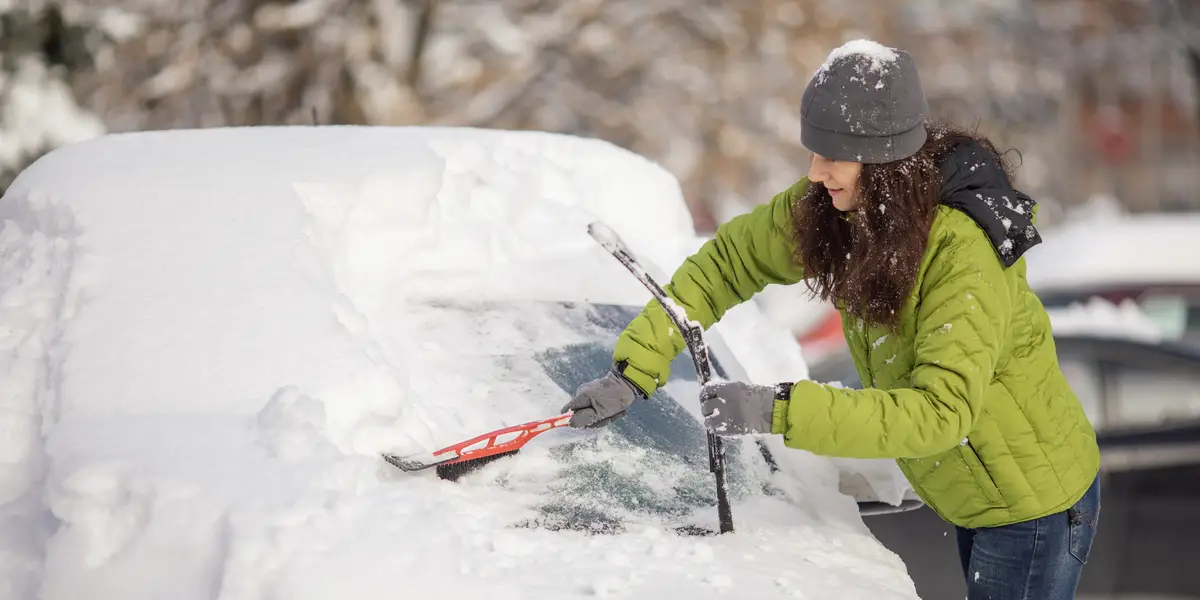Winter weather can be hazardous for drivers. It takes longer to stop on icy roads and it’s harder to maintain control of your vehicle.
Preparing your car for winter driving can help you avoid these accidents. Here are a few tips on how to prepare it for cold and wet conditions during this season of change.
Check Your Tires
One of the best ways to prepare your car for winter driving is checking your tires. Inflating them properly not only makes for safer driving, but it also improves fuel economy.
Tread depth is another critical factor, as it helps reduce the likelihood of skidding, sliding or hydroplaning on ice and snow. To ensure optimal tire tread life and prevent skidding or sliding while driving on slippery surfaces, check your tread depth once a month and before long road trips.
You can check the tread on your tires with a simple tool called a tire tread gauge, which you can purchase at any hardware or home improvement store. Simply stick a coin into the shallowest groove of your tires and see how much of it is uncovered.
If you notice many nail holes, small stones, or other objects embedded in your tires, take them to a professional for repair. These could be signs of a leak or indicate that your wheels are out of alignment.
Inspect Your Windshield Wipers
Windshield wipers on your car are an integral part of maintaining visibility during winter weather. If they’re not functioning properly, it could make driving your vehicle hazardous.
Check your wipers and replace them if necessary. Ideally, they should be able to completely clear your glass with each swipe.
Traditional wipers can ice up and freeze in cold weather, decreasing their effectiveness and causing them to miss spots on your windshield.
Instead, invest in special wipers designed specifically for winter weather to avoid these issues. They feature a rubber or plastic cover to insulate them from the cold.
Another way to prevent a snowy or icy windshield is by cleaning your windscreen and wipers before the storm. Doing this will stop ice from building up on these components, giving you clear visibility while driving.
Check Your Brakes
Your brakes are one of the most essential safety components of your car. They enable you to stop quickly and safely when driving on slippery roads.
Maintaining your brakes during wintertime is essential. If they start to fail or malfunction, it could be dangerous to drive and require calling a breakdown recovery service for assistance.
There are often signs that your brake pads need replacing, such as squealing and grinding noises. These usually indicate that the pads have worn completely and are now grinding into rotors when you press on the pedal.
To inspect your brake pads, remove the tire and visually inspect them or use a vernier caliper to measure them. These can be purchased from hardware or automotive stores as well as online.
Check Your Battery
Winter can be one of the toughest periods for your car battery, as cold temperatures slow down chemical reactions inside it and make starting up the engine much more challenging.
If you want to guarantee your battery has enough juice for the winter, there are a few steps you can take to prepare it.
First, test its voltage with a multimeter.
You may also use your owner’s manual to determine the proper battery voltage.
Fully charged batteries can withstand a wider temperature range than partially discharged ones.
To protect your battery during winter, it’s best to keep it charged and avoid driving when partially discharged. Even a short trip can drain a partially discharged battery, increasing the likelihood that freezing or not starting your engine next time you turn the key is more likely.




